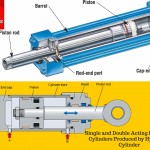Data visualization sounds like a cutting-edge technique, and in the context of big data, it is. It’s also useful to remember that some form of information visualization has been used to communicate data for thousands of years. At its most basic, it’s simply a way to tell a story using graphics instead of words. It’s especially useful for telling a story that is based on a lot of numbers, and that’s why it’s becoming so popular in the era of massive data flows. Computers are able to find and store more information than we can possibly understand and make use of unless we employ software that filters it and displays it in informative ways. Visualizations are the new frontier in big data.

In a business, no matter how data is collected, it’s ultimately meant to be presented to human beings to inform decisions. Human beings process information in different ways, but the fastest way to get people to grasp the central point of any data set is to put it in the form of a chart or graph. Before the advent of powerful computers, large digital storage devices, and high-speed Internet connectivity, collecting and storing information was a laborious process. That labor intensity limited both the amount of data collection possible and the complexity of the analysis that was possible. Today’s computing firepower not only makes new and powerful visualizations of data possible, it makes them essential. In the modern marketplace, a company that can gather and interpret data faster and more effectively than a competitor will have a powerful edge. Here’s a list of the top 5 companies that offer effective visualization services for your company’s data:
IBM.com: You can look at IBM as the poster child of the march from the introduction of rudimentary computing to robust visualization of data. IBM data collection goes back to punch cards, and they’ve moved through every phase of computing from personal computers, big iron, and now global information services. IBM offers multiple suites of database software that lets customers drill down and present important data in visual form to improve understanding of important concepts based on lots of information.
CPTech.com: Corporate Technologies is an industry leader in business intelligence, data integration, information management, cloud computing and related digital information services. They give customers powerful visualization tools optimized for use with Hadoop and other database platforms. These tools enable intelligent decision-making based on analysis and distillation of mountains of data. Business Intelligence systems need a robust back end that collects important data while parsing out extraneous information, with the ability to present it in usable, customizable form for managers to use in decision making. Corporate Technologies handles big data for industries as disparate as banking, retail, insurance, higher education’s, and logistics.
Splunk.com: With a background in log analysis, Splunk was well versed in real-time data processing. It merged with a pure visual analytics firm, and the resulting expertise has made them into player in the big data field. Their tools let users track customer satisfaction, monitor service usage, and visualize trends as they’re happening. They’re especially adept at information flows on social platforms.
Panorama.com: Panorama offers their Necto application that gives robust support for data collected from almost any source. It’s the only business intelligence suite that is built for Mircosoft platforms in particular. The Necto data discovery suite boils down data preparation into simple and understandable visual representations, while preserving the ability to handle massive data flows.
Pentaho.com: Pentaho business intelligence software offers seamless extraction, transformation, and loading capabilities, plus elegant transformations of hard data into visualizations of all kinds. It’s compatible with information stored on almost any kind of database, NoSQL and Hadoop. It offers better interface capabilities with other business intelligence software than most other suites.
The Importance of Visualization: When data comes in small doses, it doesn’t need to be shown to people in multiple ways to be understood. A good example is a telephone number. If you want to memorize one telephone number, you can look at it on a page for a few moments and commit it to memory. Now picture a telephone book. You have no chance at memorizing all the information in a phone directory, and even if you could, you would simply be a walking file cabinet. You couldn’t show others anything useful about the information you had, except to dispense a phone number when asked. Visualizations for business intelligence are required to communicate a lot more than one piece of information at a time, but they also require the capability to handle much more information than one phone directory contains. If you were a business that could use the information in the phone directory if it was filtered properly and presented in an understandable format, you could make a lot of money on information that was worthless to others.
Spreadsheets Are Difficult to Visualize: It’s hard to overestimate the increase in productivity that the first electronic spreadsheets brought to the modern office. Spreadsheets quickly became too number-intensive to be readable by any but the most interested parties. A person that was new to the information presented on a spreadsheet could spend hours looking for pertinent data among the rows and columns, and then have to picture the relationships between the information that was discovered in their head. With the big increase in computing power and information flows that databases represent, they make spreadsheets easy to understand in comparison.
Data visualization has become essential to communicate important ideas to groups that didn’t need to see the calculations that were used to produce them. Because the visualizations could be changed to display information in hundreds of different ways at the touch of a button, they have quickly become a planning tool instead of a simple way to display information. Decision makers are tasked with dealing with ever-increasing data flows, and they require interactive graphs and charts if they are going to be able to identify opportunities for improvement, seek out problems that need attention, understand customer behavior, predict sales numbers, and find ways to boost revenue and decrease expenses.










[…] Top 5 Companies For Effective Data Visualization […]